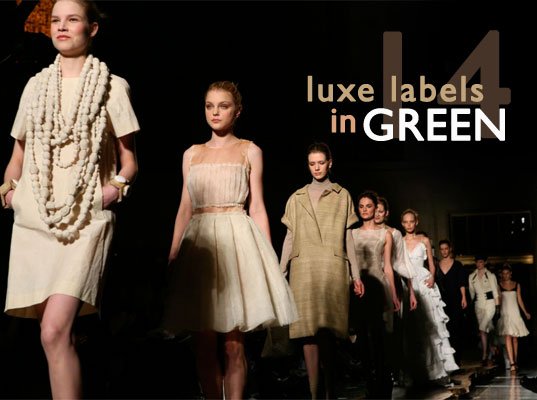Circular Economy in Luxury: The New Consumerism
Have you ever thought why to own something that you only use occasionally or why buy an expensive product whose appeal may not last? Definitely yes…this thinking of consumers is influencing their consumption behavior. Today’s consumers are increasingly searching for maximum value and seeking to redefine what is imperative to them. They are guided by sustainability, frugality, shared economy and wellbeing. This concept of ‘New Consumerism’ began a decade ago during global financial recession and continued after that. Circular Economy is one of the several trends of ‘New Consumerism’ which has made impact across various industry. Today, the luxury fashion industry is going through phenomenal change in its landscape and is influenced by circular economy. Today, consumers’ beliefs, attitudes and consumption patterns are changing, with increasing number of consumers looking for sustainable products, marks the beginning of a new consumerism. There has been sizable shift in the primacy of what consumers actually value from ownership to shared economy, from possessions to experiences, from conspicuous consumption to conscientious consumption and from self- orientation to sustainable orientation. They are looking for value beyond the product itself through investment in health and well-being. They want to feel good and not guilty while purchasing a certain luxury brand. With the rising concern about social and environmental sustainability among opulent consumers, especially Generation Y, ‘Green is the new Black’.
In early times, the yearning of ‘buying to impress others’ was considered as principal motive for acquiring luxury brands. However, lately with the consumers’ move towards new priorities, luxury brands are working towards redefining their business models with the focus on reducing social and environmental problems through the use of sustainable technologies. They are using environment-friendly raw materials, like organic cotton and natural dyes, for instance, the leather of a Dior handbag is attained from Italian bio farms. Many organizations are also using recyclable packaging to ensure circular luxury processes. Few luxury fashion retailers including Gucci, Prada and Armani are retaliating to the rising consumer demand for making the value chain transparent and sustainable.
Circular economy in luxury is a concept of reviving the essence of luxury with its long established emphasis on rarity, reflective buying, restoration, longevity, endurance, hand craftsmanship and consideration for people and planet.Luxury brands are making serious efforts to move from traditional linear economic model (take-make-dispose) to circular economy through embedding the 3R principle (Reduce, Reuse and Recycle) into production and consumption process. The fashion industry unquestionably influences heavily on the environment. It uses vast amounts of water throughout all processing operations, uses 25% of global chemicals, contributes towards unloading polluting chemicals and industrial waste into the world. The Danish Fashion Institute (DFI) has pointed out fashion as the second most polluting economic sector after oil business. Considering the gravity of the situation, luxury industry is progressing towards circularity as luxury consumers seek for superior quality products which provide no harm to environment. Prada is using variety of biodegradable natural fibers in place of polyester. Stella Mc Cartney uses no leather in her luxury collection. Her 70% products are handmade, recyclable and reusable. The circular economy is an appropriate response to face the issue of environmental pollution, because it is a system designed to create new wealth without downsizing the intrinsic quality of the product.
Many players in the luxury industry have realized the importance of sustainability and thus are remodeling their conventional businesses by incorporating concepts of reuse, share, rent or recycle which are essence of circular economy. For a category that is still in its nascent stage, there are quite a few business models. One such online platform running successfully in India since 2015 is “Flyrobe.com’ that rents designer ethnic and Western apparel. Another popular online platform is Swishlist.in. Pre-owned clothes are solution to a growing section of the fashion-conscious people. The clientele of such companies not only embraces people who cannot afford such expensive clothes but also those who are driven by the need of not repeating their outfits or people who rent for the love of fashion. There is cultural shift in consumption of luxury fashion viz. consumers are open to wear hand-me-downs, even if not within the family, people are not interested to spend heavily on one- time usage of such products, and there is aspiration to wear luxury clothes. There has been increased emphasis on ‘Reusability’ by focus on functionality over ownership which leads to the growing trend towards pre-owned luxury goods. Consumers of pre-owned luxury fashion are more contented because they get to uphold their self-respect by secrecy of consumption than declaring their affinity for cheaper clothes. They are working on the principle of circular economy to generate ‘Restorative’ economic model and create timeless luxury items which are inherited from one generation to another. Circular economy has also inspired these brands to follow the concept of ‘Reduce’ through production in smaller batch sizes with slow production cycle. Luxury conglomerates like LVMH and Kering are shortening production cycles across brands. Though luxury and circular economy appear to be antithetical to each other, but luxury brands are putting efforts to reposition themselves as ‘the care taker of mother earth’ to establish a positive brand image among the new luxury buyers.
(This article has also been published in Luxury Daily on May 22, 2018).
